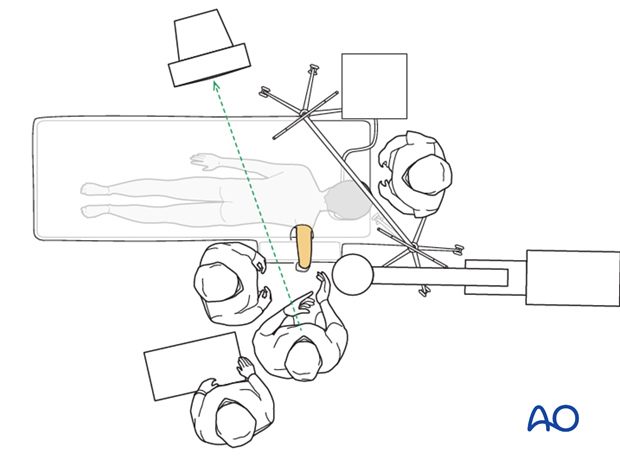Prone position
1. Preoperative preparation
The following are essential for successful surgery:
- Patient information
- Operating room personnel (ORP) information/instruction
- Surgical planning
2. Patient information
Before treatment discuss the following information with the patient/parents/carers:
- Nature of the injury
- The chosen treatment and why a particular treatment is selected
- Alternative treatments
- General operative risks
- Expected healing time
- Functional recovery
- Implant removal
3. Information for operating room personnel
Operating room personnel (ORP) need to know and confirm:
- Consent form, completed and signed
- Site and side of fracture
- Type of operation planned
- Surgical approach
- Operative site has been marked by the surgeon
- Condition of soft tissues
- Equipment/implants needed
- Patient positioning
- Duration of operation
- Positioning of image intensifier
- Antibiotic prophylaxis
- Comorbidities, including allergies
4. Surgical planning
The surgeon should make sure that:
- Relevant x-rays and other images are available in the OR.
- Required instruments and implants are accessible and ready.
- Tourniquet is available (a sterile tourniquet makes draping more straightforward).
- Image intensification is available.
- Intraoperative x-ray documentation should be undertaken, with clear AP and lateral views, before applying any plaster cast.
- There is a clear, step-by-step plan of the operation, including backup plans.
5. Anesthesia
- General anesthesia
- Local nerve block
- Combination of nerve block and light general anesthesia
- Prophylactic antibiotics (see local microbiological protocols.)
6. Patient positioning
Position the patient prone with the forearm hanging free supported with a bolster under the distal humerus.
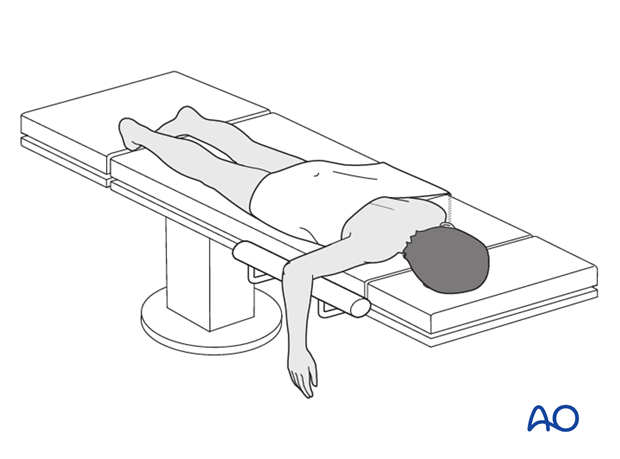
7. C-arm positioning
Position the C-arm parallel to the operating table.
For AP view extend the elbow.
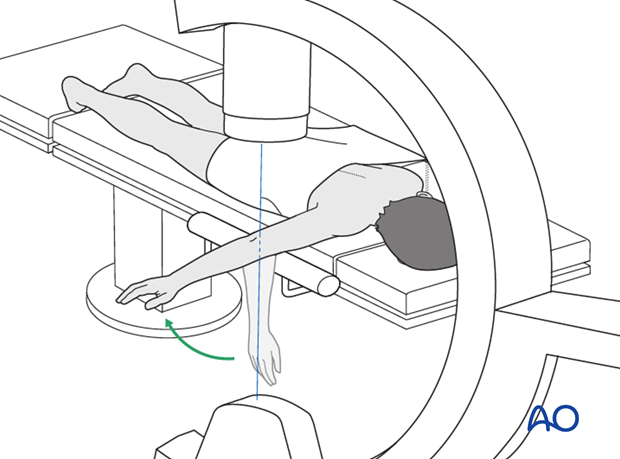
For lateral view rotate the C-arm, not the forearm.
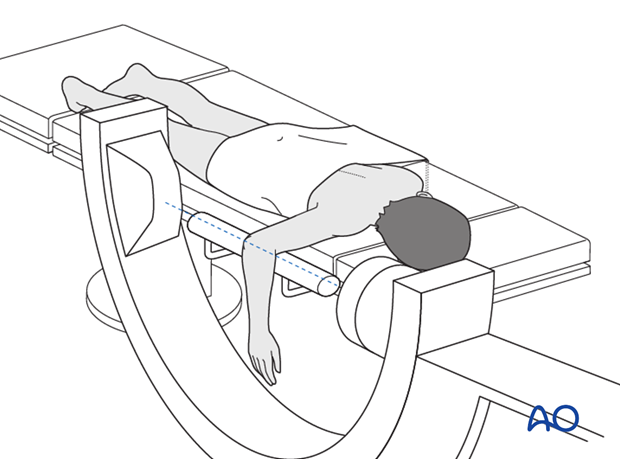
8. Skin disinfecting and draping
With an assistant holding the arm, disinfect the entire arm down to the fingertips.
Drape the hand in a glove or leave it free.
Drape the arm up to the shoulder.
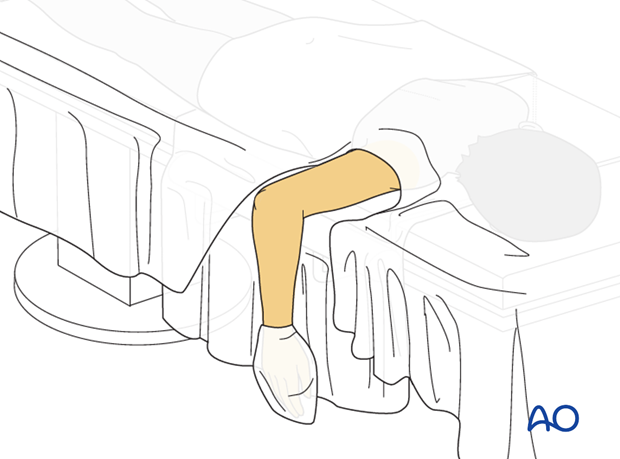
9. OR set-up
The optimal position of the surgeon is perpendicular to the operating table in front of the elbow.
The position of the screen should allow a direct view for the surgeon.
The position of operating room personnel should permit ergonomic assistance.
